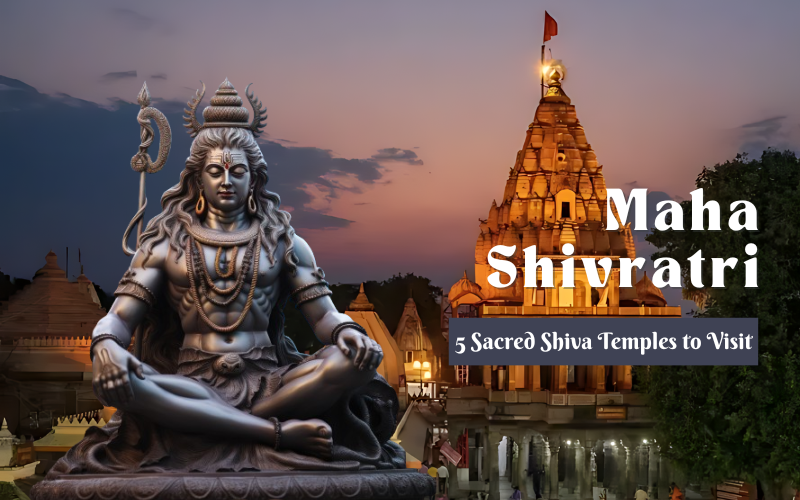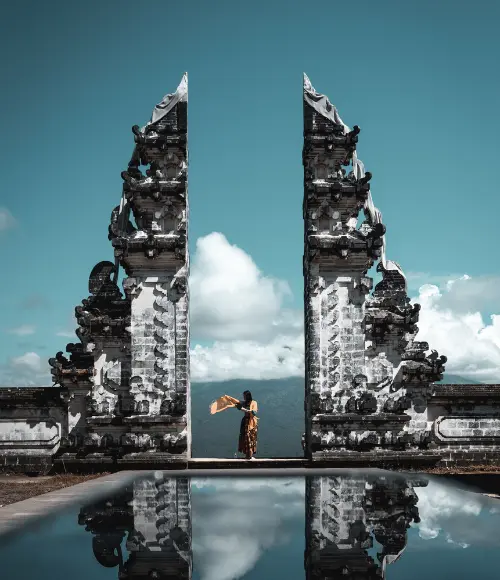Sacred Temples to Visit During Mahashivratri

Sacred Temples to Visit During Mahashivratri
Mahashivarathri, dedicated to lord Shiva, is one of the major festivals in Hinduism and holds immense significance. Celebrated in all its grandeur, Maha Shivarathri commemorates the regathering of Shiva and Shakti.
One of the stories goes like this: When King Daksha who fiercely hated Shiva held a yagna inviting everybody except Shiva and Sati, she insisted on attending uninvited. King Daksha was furious at Sati upon her attendance with their discourse insulting Sati’s husband due to which she jumped into the yagna fire.
Deeply hurt, Shiva commenced the cosmic dance often referred to as Rudra Tandav. He created Virabhadra and Bhadrakali who destroyed the place killing almost everybody present including King Daksha. The lost lives were later reincarnated.
To calm him down Lord Vishnu helped reincarnate Sati as Parvati just to be reunited with Lord Shiva.
Scientific reason
The scientific reason is that when the cycle of different phases of the moon- also called the lunar month-falls full on the fourteenth day, each month. This day of the full moon is revered as the Shivarathri. Among the 12 Shivarathris the one that occurs between February and March holds greater significance and hence is referred to as the Maha Shivaratri.
During this night, the alignment of the northern hemisphere of the earth results in an influx of energy into human beings enabling them to attain their greater spiritual peaks through meditation.
On this auspicious day, heighten your spiritual experience by exploring these 5 temples in India:
1. Mahakaleshwar Temple:
The deity of time and death, in all his glory and grace, reigns supreme in the temple of Mahakaleshwar. For centuries, devotees have journeyed here to offer prayers and seek blessings in his sanctum. The temple gives off the feeling of a warrior with its Shikhara raised high with pride winning the battle against time.
Legend has it that when a young boy named Srikhar who pleaded to pray with the king of Ujjain was thrown out of the city, he overheard an army plotting to attack. The boy prayed to Lord Shiva to save the kingdom along with a priest who heard the prayers. Just in the nick of time Shiva took the Mahakal form and saved the city from the invaders. And from that day on, Shiva continues to reside in the hearts of people, in this temple of Mahakaleshwar.
Among the 12 Jyotirlingas in India, the one in Ujjain is refuted as “Swayambhu” meaning it originated on its own. Anytime between October and March would suit the weather conditions for visitors and since Mahashivrathri this year is on March 8 the stars have really aligned.
2. Omkareshwar Temple:
Along the fertile banks of the Narmada river in Madhya Pradesh is the Jyotirlinga of Omkareshwar. The Shikhara soars to the sky looking down on the magnificent “om” formed by Narmada river.
The story circling around the birth of this temple is that, when Narada Muni visited the Vindhya mountains, he was enraged that there wasn’t a place for Lord Shiva. The deity of the Vindhya Parvat took to severe penance in repentance which was acknowledged with Shiva residing here as a Pranava Lingam.
One of the special features that deserves to be mentioned is that this temple has an enormous prayer hall with 60 elaborately carved pillars inside it. With over 6 pilgrimages and 33 deities this temple is a nest for spiritual exploration.
3. Kashi Vishwanath Temple:
On the shores of the sacred Ganga river, in the city of Varanasi, lies the sanctum of Kashi Vishwanath. This temple is one of the most common pilgrimage places and holds significant importance among the devotees.
The story of Kashi Vishwanath can be found in the Shiv Puran which details how Shiva wanted to test the Gods, Brahma and Vishnu who argued about their supremacy by splitting the three worlds into an endless pillar of light forcing both to search for the source of light. Lord Vishnu accepts defeat, while Lord Brahma lies to assert supremacy which leads to Brahma getting beheaded and cursed.
People from far ends of the earth travel to this place as bathing in the Ganga river can cleanse one’s soul and visiting this temple can relieve them from their earthly ties and help them to attain Moksha or salvation. Join them and surrender yourself onto the Lord and let him guide you through this challenge called life this Mahashivarathri.
4. Rameshwaram Temple:
Flourished by the waves of Bay of Bengal and Gulf of Mannar is the Rameshwaram temple in Tamil Nadu. The story of Rameshwaram temple is that when Lord Ram killed the Evil king Ravana to save his wife Sita, Lord Ram stopped by Rameshwaram on his way back to Ayodhya upon the advice of the sages with him to worship Shiva as he slayed one of his devotees. Lord Ram set up a lingam brought by Lord Hanuman from Kailash.
And that was the instance which led to the worshipping of the Lord Shiva in this sacred place.
Rameshwaram is world renowned and resides as a hub for pilgrims of different forms. This temple’s brilliance in architecture, its splendour in sight and its depth in cultural heritage makes it a must visit for all those ready to embark on their spiritual journey.
5. Murudeshwara Temple:
Surrounded from all three sides by the Arabian sea is the Murudeshwara temple. Beside the 20 storied temple is the dazzling statue of the Lord Shiva doing his Tapasya.
The story of this temple goes way back in history when Ravan obtained the “Atma linga” through great devotion to Shiva, fearing the imbalance of power, the gods tricked Ravan forcing the linga to be placed on the ground resulting in impotency of the linga. Ravan tried uprooting the linga with so much force that the pieces of linga scattered some miles away from him. And one of the pieces landed on the Kanduka Giri hill around which the temple was built.
Final Thoughts:
Mahashivarathri is an occasion celebrated with profound devotion symbolising the union of consciousness and energy in the form of Shiva and Shakthi, and the triumph of good over evil. On this auspicious day, devotees immerse themselves in prayer, meditation, fasting and other rituals seeking spiritual transformation. This festival marks the remembrance of overcoming challenges and adversity in life and partaking in a journey of self-discovery and enlightenment.
May the essence of Mahashivarathri inspire us all to cultivate compassion, wisdom, and inner peace, fostering harmony and goodwill in our lives and the world at large.





